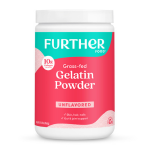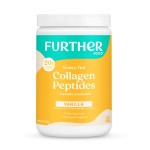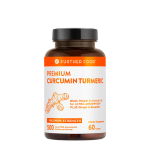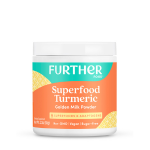Looking for an easy to read and remember keto diet foods list? We know how confusing it can be figuring out what to eat and what foods to avoid on a keto diet. Here we provide a comprehensive ketogenic diet foods list to make it easier for you to start and stick with the keto diet. Use this guide to help with your ketogenic diet plan; we’ve even included some easy keto-friendly recipes that are easy to make!
What is the Ketogenic Diet?
In a ketogenic diet, you are on a high-fat, low-carb, and moderate-protein diet. By doing this, you are forcing your body to enter a state of ketosis, which is when you run on energy from fat instead of energy from carbohydrates, or glucose. This leads to ketosis, in which your liver breaks down fats in order to produce ketones. Ketones allow you to use fat directly for energy.!
The ketogenic diet has been growing in popularity, because of its proven benefits in helping people achieve their long term weight loss goals and even in treating illness. But if you want to reap the benefits of the ketogenic diet – from weight loss to better skin to improved cholesterol and insulin levels – you need to follow the diet quite strictly. Eating the right foods, and avoiding certain foods is essential in order to truly transition into ketosis and remain in ketosis. This could take weeks to months, depending on your body and how effectively you’ve been eating.
Don’t worry, though! The ketogenic diet does not mean you need to starve yourself. We always stress that you are not starving your body, you’re only “starving” yourself from carbs. You still have quite the variety of tasty foods to eat! But we understand that figuring out exactly what you can and can’t eat, however, can be very difficult – especially when first starting this new way of eating. So to help, we are providing you with a thorough list of foods you can happily partake in while on the high-fat, low-carb ketogenic diet. Eating this way can help you say goodbye to all those fats that your body has been storing due to excess glucose intake!
To make this an easier browse, we list the foods you can and cannot eat by group. Note that sugary foods are NOT on this list, as they contribute to your glucose levels, the opposite of what you want. Remember the aim of the keto diet is to keep sugar and carbs to a minimum.
Keto Diet Foods to Enjoy
As we said before, foods that are great for the ketogenic diet are foods that will contribute to your high-fat, moderate-protein, low-carb diet. Plenty of these foods are ones you may have already guessed to be approved, as they tend to be healthy anyway. Some, however, may surprise you! Remember also to make sure you check the source of your food: organic, grass-fed, non-GMO foods are always more ideal and better for you.
Fats and Oils
The majority of what you will be eating on the ketogenic diet will be fat. It’s common to associate fats in a negative manner, but on this diet, fat is your best friends!
Now it is important to know that there are indeed different types of fats: saturated, monounsaturated, polyunsaturated, and trans fat.
- Saturated fats are simply fats that have molecules with no double bonds between themselves and carbon.They also tend to be solid at room temperature.
- Monounsaturated fats have a single double bond in their fatty acid chain, just one more than saturated. Because of this, these fats tend to be liquid at room temperature, but once they are chilled or refrigerated they start solidifying. Both can be quite beneficial to the body, and are key to the diet.
- The next type of fat is polyunsaturated. When it comes to this kind of fat, natural is good, processed is bad. While this type of fat, which has at least two double bonds. is also healthy and great for the diet, know that there is omega-3 and omega-6 fats included. These are essential fatty acids and key to the function of your brain and cell growth, so be sure to keep a good balance of your Omegas when eating.
- Trans fat is the type of fat to avoid at all costs, or at least as much as possible. These fats raise what is commonly considered “bad” cholesterol: low-density lipoproteins, or LDL. This may put you at a higher risk of developing heart disease. Therefore, this is the specific fat that we stress you stay away from. Read labels and know where your food is coming from – that’s our most valuable advice!
So what foods are perfect for increasing your fat intake, yet are also low in carb? Let’s take a look!
For Cooking Purposes
- Coconut Oil
- Coconut Butter
- Avocado Oil
- Sesame Oil
- Mayonnaise
- Butter
- Ghee
- Lard
- Tallow
- Macadamia Oil
- Olive Oil
- Cocoa Butter
- Egg Yolk
- Walnut Oil
- Non-Hydrogenated Animal Fat
- Avocado
- MCT Oil (Medium-Chain Triglycerides) or MCT Powder
- Flaxseed Oil
- Almond Meal or Almond Flour
For Meals or Snacking
- Macadamias
- Walnuts
- Tahini
- Pumpkin Seeds
- Pecans
- Almonds
- Hazelnuts
- Brazil Nuts
- Pine Nuts
- Sesame Seeds
- Cashews
- Coconut
- Pili Nuts
- Butter Spreads: Cashew Butter, Almond Butter, Sunflower Seed Butter
For frying or sauteing food, we suggest you use ghee, coconut oil, or non-hydrogenated lards instead of other oils. This is because these ingredients oxidize less than the oils itself, meaning they have a higher smoke point. You will be getting much more of those important essential fatty acids.
Helpful Tips:
Take caution when eating nuts and seeds. They do indeed contain carbs, some higher than others. It’s quite easy to over indulge on your nutty snack, so just because they are high in fat does not mean they’re perfect for the keto diet. Be wary of cashews and pistachios. As tasty as they are, they’re much higher in carb count than other nuts. It’s just as important to avoid carbs as it is to consume fats. Always pay attention and read labels. Aim for the fattier treats!
High Fat Dairy
Dairy isn’t for everyone, but if you are someone who loves dairy, you may love the keto diet! In fact, most dairy products are appropriate for this particular diet because they offer both fat and protein. To get the most out of your dairy consumption, look for high or full fat products, and aim for those that are organic and raw. That means you should try and purchase cheeses that come from whole milk.
Helpful Tip: Don’t get tempted by advertisements that draw you in because a dairy product is low-fat (especially low-fat yogurt – being low-fat does not mean it’s healthy!). Eat those fats! Read the labels to take into account the amount of sugar and protein, as it should be accounted for in your diet. You only need a moderate amount of protein.
Stock up on these cheese, creams, yogurts, and milk-based products.
Cheese
- Gouda
- Mozzarella
- Feta
- Cream Cheese
- Cottage Cheese
- Swiss
- Parmesan
- Goat Cheese
- Brie
- Blue Cheese
- Cheddar
- Colby
- Mascarpone
Creams and Other
- Heavy Cream
- Greek Yogurt
- Half-and-Half
- Sour Cream
- Mayonnaise
Protein
Just because you are eating high fat on the keto diet, this does not mean you should be eating high protein. Eat protein in moderation.
Helpful Tips:
- Darker meats tend to be higher in fat than white meat, so pork may be a better substitute than chicken. Check labels when choosing between different meats – aim for fattier ratios in your ground beef.
- If you prefer eating less fatty meats, be sure to pair them in your meal with fatty sauces or side dishes.
- As always, grass-fed and pasture-raised or wild-caught is the way to go. Watch out for sugar and fillers
Meat
- Pork
- Ground Pork
- Tenderloin
- Ham
- Chops
- Loin
- Poultry
- Chicken
- Quail
- Turkey
- Pheasant
- Duck
- Beef
- Steak
- Ground Beef
- Roast
- Brisket
- Stews
- Veal
- Goat
- Lamb
- Wild Game
- Organ Meats (liver, tongue, kidney, offal, heart)
Fish, Shellfish, Seafood
- Catfish
- Salmon
- Trout
- Tuna
- Cod
- Mackerel
- Halibut
- Snapper
- Mahi-Mahi
- Flounder
- Oyster
- Crab
- Lobster
- Clam
- Mussels
- Squid
- Scallops
Other Protein Sources
- Whole Eggs
- Nut Butter
- Bacon
- Sausage
The Easiest Way To Add In Protein? Try Our Collagen Peptides Which Add Tasteless Protein Into ANY Dish. Learn More Here!
Vegetables
It’s not a surprise vegetables would be on this list, but this category of food isn’t so simple. Some vegetables are actually pretty high in carbohydrates and should be avoided. For what little carbohydrates you’ll be consuming, most of it should be coming from your vegetables. Don’t worry. There are tons of vegetables that are appropriate for the diet! Let’s take a look:
Veggies
- Celery
- Cabbage
- Chinese
- Green
- Red
- Broccoli
- Mixed Greens
- Daikon Radish
- Cauliflower
- Arugula
- Alfalfa Sprouts
- Cucumber
- Chayote
- Bok Choy
- Artichoke Hearts
- Green Beans
- Chives
- Mushrooms
- Baby Bella
- White
- Parsley
- Onion
- Scallion
- Yellow Onion
- Bell Peppers
- Radishes
- Shallots
- Scallion
- Kale
- Sauerkraut
- Collard Greens
- Mustard Greens
- Spinach
- Jicama
- Pumpkin
- Squash
- Spaghetti Squash
- Summer Squash
- Fennel
- Zucchini
- Palm Hearts
- Olives
- Green
- Black
- Radicchio
- Garlic
- Lettuce
- Iceberg
- Romaine
- Loose-Leaf
- Tomato (scientifically a fruit, though considered a vegetables by many nutritionists!)
- Small
- Medium
- Cherry
- Watercress
- Mung Bean Sprouts
- Chicory Greens
- Jicama
- Asparagus
- Okra
- Swiss Chard
- Snow peas
- Dandelions
- Bamboo Shoots
- Beet Greens
- Cardoon
- Eggplant
Take note that many of the vegetable listed are cruciferous, meaning they are a part of the cabbage family. These tend to be low-carb and highly nutritious (Vitamin C, E, K, and more). You can’t go wrong with those!
Veggies to Limit or Avoid
- Be cautious of sweet vegetables like carrots, winter squash, and pumpkin. These vegetables tend to have a higher carb count, so be sure to enjoy but in moderation.
- Starchy vegetables should also be a concern. Avoid veggies like potatoes, parsnips, yams, and corn.
- Beans and legumes should be avoided as well. They are quite high in starch and low in fat. Eating foods like lentils, chickpeas, and black beans won’t be very helpful in your stride towards ketosis.
Low Carb Fruit
Fruits, as natural as they can be, are typically loaded with sugar. Sugar is a huge no in the ketogenic diet because you want to avoid having glucose readily available for energy. Therefore, the fruits that you are more free to eat are low-carb berries. Large fruits have a strong tendency to be loaded with sugar, and so it can be easy to surpass your advised consumption of sugar when snacking on fruit. Take a look at this list of low-carb fruits you can eat in moderation.
Fruit
- Blueberries
- Cranberries
- Blackberries
- Cherries
- Cranberries
- Loganberries
- Raspberries
- Strawberries
- Gooseberries
- Avocado
- Melon
- Cantaloupe
- Honeydew
Helpful tips:
- For a bit of a treat, trying freezing your berries. They’re delicious that way! You can still make your daily smoothie, but go for low-carb fruits instead of ones like bananas and apples.
- Just because the fruits listed above made the list does not mean you are completely free to indulge. The carbs can easily add up as you snack on these little treats, so always be mindful of your serving size. Even in its natural form, sugar is still sugar.
Looking For a Keto-Friendly Dessert? Try Our Premium Gelatin Powder! It Easily Pairs With Fruit and Can Be Used To Create More Than Just Jello! Learn more here!
Keto Diet Foods To Avoid
Although we’ve already mentioned a few foods to limit or avoid above, here is a more exhaustive list for you to refer to. These foods should not be eaten on a keto diet as they will prevent you from achieving your desired goal of going into ketosis and burning stored glucose.
Sugar
This is listed first because no matter what diet you are on, sugar is a major thing to avoid. Sugar is not something to be eaten in moderation in the ketogenic diet. In fact, it should be avoided as much as possible.
Sugar can be found in many, many foods, so it’s important to educate yourself on what to look for. Sweet processed foods, large fruits, and cold beverages tend to have a large amount of sugar. Some sugary foods to avoid on the keto diet include:
- Fruit Smoothies
- Fruit Juices
- Apples
- Bananas
- Lychees
- Figs
- Mango
- Grapes
- Pears
- Syrup
- Candy
- Soda (though carb-free, this does include diet soda)
- Honey
- Artificial Sweeteners
- Cookies
- Ice Cream
- Pastries
Starches and Grains
As tasty as bread and pasta is, they will need to be given up if you want to fully embrace the keto diet and get to that state of ketosis. Starches and grains are totally loaded with carbohydrates. While some of these foods like french fries and pastries might not surprise you, other “natural” grains like beans and corn still need to be eliminated. Some examples to avoid include:
- Oats
- Potatoes
- Beans
- Black Beans
- Pinto
- Lima
- Chickpeas
- Lentils
- Carrots
- Yams
- Corn
- Flour
- Rice
- Pasta
- Bread
- Pastries
- Danish
- Pie
- Pizza Crust
- Bagels
- Waffles
- Pancakes
- French Fries
- Cereal
- Muffins
- Crackers
- Chips
Luckily, these days, you can easily find recipes using innovative substitutes for starches, including cauliflower rice, spaghetti squash, and zoodles (zucchini noodles). This is a great opportunity to be creative during meal time!
Alcohol
This is no surprise: alcohol has made the list of what to avoid on a keto diet. Alcohol in general is not advised, but in particular to the keto diet, we have to specify that alcohol tends to contain carbohydrates.
While alcohol should be avoided during the initial stages of a keto diet, just keep in mind that hard liquor has the least amount of carbs. And since most of us consume spirits in smaller quantities than say beer, this means less carb intake overall. If you prefer having a mixer with some bubbles, try soda water and some lime.
Helpful Tip: Be cautious and watch out for the munchies when drinking alcohol! Don’t break your keto diet and give in to those carb cravings!
Keto-Friendly Recipes
So after looking at a tremendously long list of keto diet foods, you may be interested in some fun, delicious recipes to get you started. Luckily we have some easy keto friendly recipes just for you! We’ve listed the total carbohydrates and total fat for your convenience!
KETO MATCHA SUPERFOOD ICE CREAM
KETO SUGAR FREE DARK CHOCOLATE ORANGE TRUFFLES
SPINACH AND FRESH TURKEY BURGERS
CHICKEN WINGS WITH TANDOORI COCONUT MILK MARINADE
ANTI-INFLAMMATORY TURMERIC CAULIFLOWER
KETO BULLETPROOF COLLAGEN COFFEE
For lots more keto recipes and more information on the keto diet, go to furtherfood.com.
Want to Read More?
7 Practical Tips and Tools That Make Starting A Keto Diet Easy
Ketogenic Diet Explained: What Happens When You Eat Too Many Carbs

























